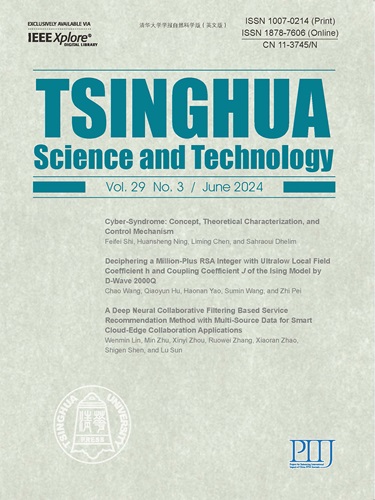Efficient Backbone Network Construction in Wireless Artificial Intelligent Computing Systems
IF 3.5
1区 计算机科学
Q1 Multidisciplinary
引用次数: 0
Abstract
In wireless artificial intelligent computing systems, the construction of backbone network, which determines the optimum network for a set of given terminal nodes like users, switches, and concentrators, can be naturally formed as the Steiner tree problem. The Steiner tree problem asks for a minimum edge-weighted tree spanning a given set of terminal vertices from a given graph. As a well-known graph problem, many algorithms have been developed for solving this computationally challenging problem in the past decades. However, existing algorithms typically encounter difficulties for solving large instances, i.e., graphs with a high number of vertices and terminals. In this paper, we present a novel partition-and-merge algorithm for effectively handle large-scale graphs. The algorithm breaks the input network into small subgraphs and then merges the subgraphs in a bottom-up manner. In the merging procedure, partial Steiner trees in the subgraphs are also created and optimized by an efficient local optimization. When the merging procedure ends, the algorithm terminates and reports the final solution for the input graph. We evaluated the algorithm on a wide range of benchmark instances, showing that the algorithm outperforms the best-known algorithms on large instances and competes favorably with them on small or middle-sized instances.无线人工智能计算系统中高效骨干网的构建
在无线人工智能计算系统中,确定用户、交换机、集中器等一组给定终端节点的最优网络,骨干网的构建可以很自然地形成为斯坦纳树问题。斯坦纳树问题要求从给定图中生成一组给定端点的最小边权树。作为一个众所周知的图问题,在过去的几十年里,已经开发了许多算法来解决这个具有计算挑战性的问题。然而,现有算法通常在解决大型实例(即具有大量顶点和终端的图)时遇到困难。本文提出了一种有效处理大规模图的分割合并算法。该算法将输入网络分解成小的子图,然后以自下而上的方式合并子图。在归并过程中,通过高效的局部优化,创建了子图中的部分斯坦纳树,并对其进行了优化。当合并过程结束时,算法终止并报告输入图的最终解。我们在广泛的基准实例上评估了该算法,表明该算法在大型实例上优于最知名的算法,并在中小型实例上与它们竞争。
本文章由计算机程序翻译,如有差异,请以英文原文为准。
求助全文
约1分钟内获得全文
求助全文
来源期刊

Tsinghua Science and Technology
COMPUTER SCIENCE, INFORMATION SYSTEMSCOMPU-COMPUTER SCIENCE, SOFTWARE ENGINEERING
CiteScore
10.20
自引率
10.60%
发文量
2340
期刊介绍:
Tsinghua Science and Technology (Tsinghua Sci Technol) started publication in 1996. It is an international academic journal sponsored by Tsinghua University and is published bimonthly. This journal aims at presenting the up-to-date scientific achievements in computer science, electronic engineering, and other IT fields. Contributions all over the world are welcome.
 求助内容:
求助内容: 应助结果提醒方式:
应助结果提醒方式:


